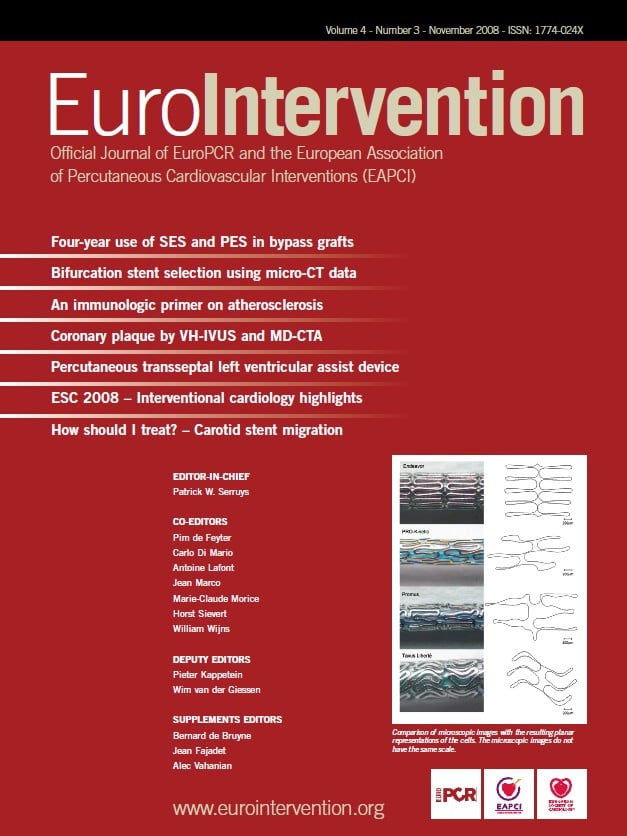
Jacques Puel is no longer among us. So recently nominated President-elect of the French Society of Cardiology, his premature death deprived him of fully appreciating yet another testimony to the affection of his colleagues and his ongoing legacy within the French and worldwide cardiology community so grateful for his life-work.
An innovator in both education and technique, Jacques Puel – like so many of us investigating the uncharted territory of a new treatment or device – was a courageous and knowledgeable pioneer without being a technical inventor. Through a series of circumstances which could only be called serendipitous, he became involved with the Medinvent company and later with Mr. Wallsten, inventor of the Wallstent. Together with Françis Joffre and Hervé Rousseau, he tested endo-lumen prosthesis in goats and in March of 1986, performed the first lumen implantation of a metallic stent in a coronary artery1. Soon afterwards Ulrich Sigwart, in Lausanne, commenced his series of implantations.
Jacques, with his great sense of humour and natural modesty, was never fully at ease with his pioneering work, a role which constantly placed him at the forefront of Anglo-Saxon forums where he struggled valiantly with the idiosyncratic English language. One day, in his typical self-deprecating and mocking way, he told us that he would have preferred not to have gotten involved in this remarkable endeavour at all. In fact, he was always referring to what for him were the true pioneers, the old Egyptians, treating the contraction or the shrinking of the urethra through the introduction of a small reed in the urinary canal.2
Possibly the best example of this modesty of his was what he wrote in Michel Bertrand’s book “The Evolution of Cardiac Catheterization and Interventional Cardiology”:
“The history of the first stents inspires three comments within the context of the evolution of medicine. One, the first “stenter” was in the right place at the right time. He was only an instrument of a natural evolutionary development; he learned modesty. Two, today, the stent is widely used in all forms of atherosclerotic disease. Yet its validation, particularly in medico-economic terms remains to be performed. Interventional cardiologists, after acquiring “the knowledge to do” are now invited to learn “the knowledge not to do”.
Three, coronary stenosis is defeated but atherosclerosis remains. The solution to atherosclerosis will be found in pharmacological stabilisation and preventions. Not for many years now have the complications of urinary bilharziosis been treated with a small reed.”3
Jacques Puel was not only a pioneer in the field of stenting. He directed a school of cardiology with exemplary integrity, unbounded energy and an overriding desire to make this pedagogical endeavour successful. And above all else Jacques Puel was a physician; throughout his entire career, he was an excellent cardiologist taking charge of his patients with great humanity and good sense, a doctor who would take the time to speak to his patients and their families, explaining, reassuring... treating well.

